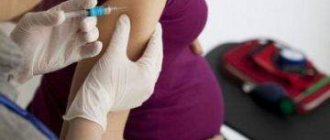The introduction of the BCG vaccine is one of the first vaccinations given to newborn children. In Russia, all infants are vaccinated against tuberculosis, with the exception of some cases. This is necessary to prevent the spread of an extremely severe and dangerous infectious disease that can lead to death.
Despite preventive measures taken at all levels, including state programs to combat tuberculosis, the epidemiological situation continues to remain unfavorable, and it is not possible to reduce the incidence. For this reason, every child must be given the BCG vaccine in the maternity hospital.
Indications
Today, two types of anti-tuberculosis vaccines are used: BCG and BCG-M. They both contain a weakened strain of Koch's bacillus, and the only difference is in its concentration. Mycobacteria are grown artificially or obtained from cattle. Other drugs for anti-tuberculosis vaccination are not used in the Russian Federation.
The World Health Organization recommends TB vaccinations for the following categories of people:
- children under one year old born or living in areas where the situation with this disease is unfavorable;
- children under 7 years of age living in regions where tuberculosis is rare, but there is a high probability of infection (due to low quality of life, living in a disadvantaged area);
- people in contact with patients infected with tuberculosis (doctors, junior medical personnel, employees of prisons and other correctional institutions, relatives of patients living in the same apartment).
Russia is one of the regions where the epidemiological situation regarding tuberculosis continues to remain unfavorable. In this regard, by order of the Ministry of Health, the National Vaccination Calendar was approved, which includes mandatory vaccination of newborns (except in cases where the child has contraindications).
The following scheme is used:
- Primary vaccination is carried out in the maternity hospital on days 3-7 of life.
- This is followed by a series of revaccinations: at the ages of 7 and 14 years, if the child has a negative Mantoux test and there are no other contraindications.
The timing of vaccination is determined by the regulatory act of the Ministry of Health of the Russian Federation, which is called “Instructions on vaccination and revaccination against tuberculosis.”
Anti-tuberculosis vaccination and revaccination
The goal of anti-tuberculosis vaccination is to create artificial immunity in a person uninfected with MVT, which increases resistance to the tuberculosis pathogen.
Created by Calmette and Guerin as a result of 13 years of hard work, the live attenuated culture of MVT is not capable of causing disease in humans, but has the specificity, allergenicity and immunogenicity necessary for the formation of immunity. In Russia, the BCG strain registered as BCG-1 is used for vaccination against tuberculosis. According to its main characteristics, it fully corresponds to the French vaccine strain MVT. The BCG-1 strain retains the necessary residual virulence, reproduces limitedly in the body of a vaccinated person, being mainly in the lymph nodes, and, when used correctly, is not capable of causing disease. For anti-tuberculosis vaccination, the dry BCG vaccine is used as the most stable, capable of maintaining the required amount of live MBT for a long time. The dry vaccine was created by domestic scientists E.N. Leshchinskaya and A.M. Wackengut in 1941. The optimal content of viable bacteria is considered to be 10-12 million/mg. The formation, duration and stability of post-vaccination immunity are determined by the nature of immunomorphological changes and the growing season of the vaccine BCG in the body of the vaccinated person. Post-vaccination anti-tuberculosis immunity is non-sterile. The presence of the BCG strain in the body determines the existence of a population of sensitized immunocompetent cells and the ability of macrophages to destroy the tuberculosis pathogen. The duration of the active period of vegetation of the BCG strain in the body is from 3 to 11 months; subsequently, the number of mycobacteria of the BCG strain gradually decreases. Already 2 weeks after vaccination, mycobacteria of the BCG strain begin to transform into L-forms. In this form, they remain in the body for a long time and support anti-tuberculosis immunity. Artificial acquired anti-tuberculosis immunity after administration of the BCG vaccine (vaccination) is not lifelong and fades away after about 5-7 years. To restore it, repeated administration of the BCG vaccine is required. This administration of the vaccine is called revaccination. In a tense epidemic situation and with a high risk of infection, anti-tuberculosis vaccination should be carried out at an early age, when the likelihood of infection is minimal due to the very limited contact of such a person with the outside world. From this perspective, the optimal solution is to vaccinate newborns with BCG. BCG vaccination in older people can be carried out only after tuberculin diagnostics (Mantoux test with 2 TU) with a negative reaction to tuberculin (positive anergy). The absence of a positive reaction to a specific allergen eliminates the possibility of previous contact with the tuberculosis pathogen and allows the patient to be considered uninfected. The effectiveness of tuberculosis vaccination is manifested by an improvement in a number of epidemiological indicators. Among those vaccinated, the incidence of tuberculosis decreases 5-10 times, mortality decreases, and the rate of MTB-infected population becomes lower. With the introduction of BCG vaccination into widespread practice, the incidence of common and severe forms of tuberculosis in children and adolescents - miliary tuberculosis, tuberculous meningitis, and caseous pneumonia - has significantly decreased. Relatively mild forms of tuberculosis with limited damage to the intrathoracic lymph nodes began to prevail. Vaccination against tuberculosis with the BCG vaccine is an internationally recognized method of specific prevention of tuberculosis in people uninfected with tuberculosis. In accordance with WHO recommendations, anti-tuberculosis vaccination is widely used in most countries of the world where the epidemic situation with tuberculosis is tense. In Russia, BCG vaccination of newborns as a mandatory preventive measure has been carried out since 1934 by decision of the People's Commissariat of Health of the RSFSR. Order No. 109 of the Ministry of Health of the Russian Federation dated March 21, 2003 confirmed the important role of anti-tuberculosis vaccination in the specific prevention of tuberculosis, and introduced additions and clarifications that correspond to the current state of the problem of tuberculosis in Russia, the level of development of phthisiology and medicine in general. BCG vaccine, organization and methodology of vaccination and revaccination. The vaccine is a live mycobacteria of the BCG-1 vaccine strain, lyophilized in a 1.5% solution of monosodium glutamate in the form of a porous, powdery or tableted mass of white or cream color. The vaccine is contained in ampoules with transparent walls with a capacity of 1 or 2 ml. In Russia, BCG and BCG-M are used for anti-tuberculosis vaccination. One 2 ml ampoule of BCG vaccine contains 1 mg of lyophilized BCG-1 vaccine strain. The vaccination dose is 0.05 mg of the drug. An ampoule of the BCG-M drug contains 0.5 mg of the BCG-1 vaccine strain, and one vaccination dose is equal to 0.025 mg of the drug. The use of the BCG-M vaccine makes it possible to reduce the antigenic load during vaccination and minimize the likelihood of complications. The drug BCG-M is used for the so-called gentle immunization in newborns and young children with a burdened perinatal period, as well as in regions with a relatively favorable epidemic situation for tuberculosis. When choosing a vaccine drug (BCG or BCG-M), the general condition of the newborn, contraindications for the use of the vaccine drug, as well as the epidemic situation in the given region are taken into account. Contraindications to BCG vaccination in newborns: • prematurity II-IV degrees (with body weight after birth less than 2500 g); • acute diseases and exacerbations of chronic diseases (intrauterine infection, purulent-septic diseases, moderate and severe hemolytic disease of newborns, severe damage to the nervous system with severe neurological symptoms, generalized skin lesions). Vaccination is postponed until the clinical manifestations of the disease or immunodeficiency state disappear; • generalized BCG infection detected in other children in the family; • HIV infection in the mother. For vaccination against tuberculosis, BCG-M is used in the following cases: • in premature infants with a body weight after birth of at least 2000 g the day before discharge from the maternity hospital; • in premature infants after the second stage of nursing in a specialized children's department (children weighing 2300 g or more) before being discharged home; • in children who were not vaccinated in the maternity hospital for medical reasons and are subject to vaccination due to the removal of contraindications; these children are vaccinated in children's clinics during the first 2 months of life without previous tuberculin diagnostics, and at the age of 2 months and older - with a negative reaction to the Mantoux test with 2 TU; • in newborns in regions with a favorable epidemiological situation for the incidence of tuberculosis. In some cases, despite the reduced antigenic load, the use of BCG-M is also contraindicated. Contraindications for vaccination of newborns with BCG-M: • prematurity, if birth weight is less than 2000 g; • acute diseases and exacerbations of chronic diseases (intrauterine infection, purulent-septic diseases, hemolytic disease of newborns of moderate and severe forms, severe damage to the nervous system with severe neurological symptoms, generalized skin lesions); vaccination is postponed until clinical manifestations disappear; • primary immunodeficiency; • generalized BCG infection detected in other children in the family; • HIV infection in the mother. In Russia, anti-tuberculosis vaccination of newborns is carried out in maternity hospitals on the 3-7th day of life without a preliminary tuberculin test. Vaccination is carried out by a specially trained nurse of the general medical network, who has a certificate of admission valid for a year. The clearance certificate is issued by the regional TB dispensary (office). Before vaccination, the doctor and nurse should additionally familiarize themselves with the instructions for using the vaccine, and also inform the child’s (adolescent’s) parents about immunization and the local reaction to the vaccine. The dry vaccine is stored in the refrigerator at a temperature not exceeding +8 °C. The refrigerator with the vaccine is installed in a special room for vaccinations and locked with a key. Persons not related to BCG vaccination are not allowed into this room. Vaccine ampoules are carefully inspected before use. If there is no label on the ampoule or it is filled out incorrectly, the expiration date has expired, there are cracks and notches on the ampoule, or there is a change in the appearance of the drug (wrinkled tablet, change in color, etc.), the use of the vaccine contained in the ampoule is unacceptable. The dry vaccine is diluted immediately before use. To do this, pour 2 ml of a sterile isotonic sodium chloride solution into the ampoule with a dry vaccine using a sterile syringe with a capacity of 2 ml, which is included in ampoule form with the vaccine. The solvent must be transparent, colorless, without foreign impurities. The vaccine completely dissolves within 1 minute after shaking 2-3 times. The use of a vaccine with foreign inclusions or flakes that do not break when shaken is prohibited. The diluted vaccine contains 20 vaccination doses (one vaccination dose in 0.1 ml of diluted vaccine). The vaccine is administered immediately after its dilution. In exceptional cases, the period of use of the diluted vaccine is increased to 2-3 hours, keeping the vaccine under sterile conditions and protected from sunlight. After 3 hours of storage, unused vaccine is destroyed by boiling for 30 minutes, autoclaving for 30 minutes at 120 °C or immersing in a 5% chloramine solution for 60 minutes. The vaccine is administered in the morning after examination of newborns by a pediatrician. On the day of vaccination against tuberculosis, other parenteral manipulations are not performed on the child. To administer the vaccine, disposable tuberculin syringes with a capacity of 1 ml with tightly fitting pistons and thin needles with a short bevel are used. For one vaccination, 0.2 ml (2 doses) of the diluted vaccine is drawn into the syringe, then 0.1 ml of the vaccine is released through a needle into a sterile cotton swab to displace the air and bring the syringe plunger to the desired graduation - 0.1 ml. Before each set, the vaccine must be carefully mixed using a syringe 2-3 times. One syringe can only administer the vaccine to one patient. Intradermal administration of the vaccine is optimal. It ensures the most rapid formation of anti-tuberculosis immunity and its maximum duration. The vaccine is administered at the border of the upper and middle third of the outer surface of the left shoulder after pre-treatment of the skin with 70° alcohol. The needle is inserted with the cut upward into the surface layer of the stretched skin. First, a small amount of the vaccine is injected to make sure that the needle enters exactly intradermally, and then the entire dose of the drug (0.1 ml in total). With the correct injection technique, a whitish papule with a diameter of 7-9 mm is formed, which usually disappears after 15-20 minutes. Getting the vaccine under the skin is unacceptable, as a cold abscess may develop. After administering the vaccine, you should not treat the injection site with disinfectants, seal it or apply a bandage. After each injection, a syringe with a needle and cotton swabs are soaked in a disinfectant solution (5% chloramine solution) and then centrally destroyed. Instruments intended for tuberculosis vaccination cannot be used for other purposes. In newborns, a normal local vaccination reaction appears after 4-6 weeks. At the site of intradermal injection of the vaccine, a papule with a diameter of 5-10 mm is formed. Over time, a pustule (bubble) appears in the center of the papule, then a crust. Sometimes a small ulceration with a diameter of 5-8 mm appears. Gradually, in 90-95% of vaccinated people, a superficial scar with a diameter of up to 10 mm is formed at the site of the pustule. In the future, the quality of the vaccination performed is judged by the presence and size of the scar. The reverse development of the vaccination reaction occurs within 2-3 months, sometimes over a longer period. A morphological study reveals proliferation of lymphatic elements at the site of administration of the BCG vaccine, and small foci of specific inflammation in the regional lymph nodes. Simultaneously with local changes at the site of vaccine administration, an immunological restructuring occurs in the vaccinated person’s body and acquired anti-tuberculosis immunity gradually develops. It forms on average after 6-9 weeks. after vaccination. An objective criterion that confirms the effectiveness of vaccination and the presence of immunity is a positive reaction to tuberculin when performing a Mantoux test with 2 TU. With proper vaccination, the number of children and adolescents who react positively to the Mantoux test with 2 TU varies from 55 to 65%, and with the introduction of large doses of tuberculin (up to 100 TU) from 87 to 90%. Persons for whom vaccination has been temporarily delayed should be monitored and vaccinated after the elimination of contraindications. If necessary, clinical and laboratory examinations are carried out before vaccination. In case of contact with infectious patients in the family, child care facility or other places, vaccination is carried out after the end of quarantine or the maximum incubation period for the disease. Monitoring of children vaccinated with BCG is carried out by doctors and nurses of the general medical network. After 1, 3 and 12 months. after administering the vaccine, they evaluate and record in the appropriate records the local vaccination reaction, its size and nature. Any interventions (treatment with antiseptics, application of a bandage) in the development of a local vaccination reaction are unacceptable. Vaccinated newborns who have a family member with tuberculosis must be isolated until immunity develops. Discharge of a child from the maternity hospital after vaccination is possible only after hospitalization of the patient in a hospital or sanatorium for 1.5-2 months. Permission to discharge the mother and child from the maternity hospital is given by the anti-tuberculosis dispensary after isolating the patient and carrying out final disinfection in his house, followed by cleaning of the apartment. A newborn from a mother with active tuberculosis is vaccinated with BCG in the maternity hospital. The child is isolated from the sick mother for at least 8 weeks in a specialized children's department. If a newborn is discharged home to relatives, then before discharge, an examination of the child’s future environment is carried out and all premises are disinfected. During this period, the mother is hospitalized for treatment. The child is transferred to artificial feeding. If a newborn has had close contact with a sick mother before BCG vaccination (birth of a child outside a medical institution, etc.), he is not vaccinated and chemoprophylaxis is prescribed for 3 months. After this period, if the reaction to the Mantoux test with 2 TE is negative, BCG-M vaccination is indicated. If tuberculosis is diagnosed in the mother of a newborn after administration of the BCG vaccine, chemoprophylaxis is prescribed to the child regardless of the time of vaccine administration. In these cases, children are under the supervision of the dispensary as they are most at risk for tuberculosis. Revaccination with BCG. In children vaccinated at birth, immunity remains for 5-7 years. After this period, the need for revaccination against tuberculosis arises. Children aged 7 and 14 years who have a negative reaction to the Mantoux test with 2 TU are subject to revaccination. The interval between the Mantoux test with 2 TU and revaccination should be at least 3 days and no more than 2 weeks. Revaccination is carried out in children's clinics or paramedic and obstetric centers. Other preventive vaccinations can be carried out at intervals of at least 1 month. before and after revaccination against tuberculosis. For revaccination, BCG is usually used. The technique of revaccination and the method of monitoring those revaccinated are similar to those for vaccination. Contraindications to revaccination of children and adolescents: • acute infectious and non-infectious diseases, exacerbation of chronic diseases, allergic diseases; vaccination is carried out 1 month after recovery or remission; • immunodeficiency states, malignant neoplasms of any location; when treated with immunosuppressants or radiation therapy, vaccination is carried out no earlier than 6 months after the end of treatment; • history of MBT infection or tuberculosis; • positive and questionable reactions to the Mantoux test with 2 TE; • complications from previous BCG vaccination. A vaccination reaction during the revaccination of BCG in the form of an infiltrate with a diameter of 5-10 mm with a small node in the center often appears in a week. The reverse development of inflammatory changes at the place of introduction of the vaccine occurs within 2-4 months, after which the surface scar remains in 95–98 % of children. After the revaccination of BCG, other preventive vaccinations can be carried out no earlier than 1 month after. This period is necessary for the development of specific immunity. In healthy people, vaccination and revaccination of BCG do not cause changes in overall well -being. Complications usually arise with arrears of contraindications and technical errors. Complications of vaccination BCG and BCG-M. In accordance with the recommendations of the International Union for Combating Tuberculosis and WHO (1984), vaccination complications are divided into 4 groups: I - local skin lesions (subcutaneous infiltrates, cold abscesses, ulcers) and regional lymphadenitis; II-persistent and disseminated BCG infection without death (lupus, Ostita, etc.); III-dissected BCG infection, generalized defeat with congenital immunodeficiency with death; IV-postbtszh-syndrome (manifestations of diseases mainly an allergic nature: knotted erythema, annular granuloma, roseoleous rash, etc.). In our country, complications after vaccination and revaccination are usually local in nature and are noted in 0.001-0.06 % of children. They often occur during vaccination than during revaccination, mainly in the first 6 months. After the first introduction of the vaccine. All children with post -vaccination complications are observed by an anti -Tuberculosis dispensary, where they receive individual specific therapy. During the treatment of a child (teenager) regarding vaccination complications, other preventive vaccinations are contraindicated. The anti -TB dispensary, together with the Center for State Apocaddrusor and the clinic, draw up a annual vaccination plan on the basis of the birth rate of children, the number of adolescents and adults subject to vaccination and revaccination. The state -owned supervision service controls not only the vaccination plan, but also the storage conditions of the BCG vaccine, the terms of its fitness, monitors compliance with technology, quality and epidemiological regime. Each case of an unusual reaction and any complications is subject to analysis and subsequent discussion. The performance of the specific prevention of tuberculosis is coordinated by the BCG vaccination commission, which includes phthisiters, pediatricians and epidemiologists. | Print |
Contraindications
Sometimes vaccination is contraindicated for a newborn. The decision to refuse vaccination is made by a neonatologist based on an examination of the child.
The following cases are absolute contraindications to BCG:
- the child was born from an HIV-infected mother;
- severe hereditary diseases have been diagnosed;
- serious birth injuries resulting in disruption of the central nervous system;
- identified tumor processes;
- immunodeficiency states;
- the presence of close relatives with an active form of tuberculosis in the newborn;
- older children in the family experienced severe complications after vaccination.
If the newborn's weight is less than 2.5 kg, then the BCG-M vaccine is used. Vaccination is postponed if the baby is diagnosed with erythroblastosis, severe infectious diseases that developed in the perinatal period, or in the presence of dermatological diseases.
Before revaccination, an examination is also carried out, and if the listed contraindications are identified, repeated administration of the drug is prohibited. Before vaccination, a Mantoux test is done. If the reaction is questionable or positive, BCG should not be administered.
Infants older than 2 months, who for some reason were not vaccinated in the maternity hospital, are given BCG after examination by a pediatrician and a Mantoux test. To do this, you need to go to the clinic and get tested.
Main indications and contraindications for vaccination
Doctors include the following indications for vaccination against this disease:
- being in the same area as an identified carrier of the disease;
- moving to places with high concentrations of tuberculosis patients;
- work in medical institutions where there are constantly patients suffering from tuberculosis.
All people who may come into contact with patients with tuberculosis in one way or another are subject to monitoring, regular examination and, if necessary, additional vaccination.
After 14 years of age, the vaccine protects a person from tuberculosis microorganisms for a long period - up to 20 years.
However, from the age of 18, all people must undergo fluorography annually in order to promptly detect the occurrence of the disease. Sometimes vaccinations are carried out even after 30 years of age, at the request of the person himself to protect himself or if he has not been immunized before.
As with any other disease, in the case of vaccination against tuberculosis, there may be absolute and temporary contraindications. Absolute contraindications to vaccination are the presence of tumors in the body and immunodeficiency. Doctors include relative or temporary contraindications for vaccination against tuberculosis in the maternity hospital:
- low baby weight (up to 2 kilograms), prematurity;
- identified intrauterine infections of the fetus;
- birth injuries affecting the baby’s nervous system;
- severe stages of skin diseases;
- all kinds of infectious processes;
- all kinds of purulent-septic diseases;
- hemolytic disease.
Also, revaccination against tuberculosis should not be revaccinated in the future if very severe reactions have previously been observed with the introduction of such vaccines. Only after complete recovery of all the conditions described above do doctors consider the possibility of immunization for such a child.
Vaccination
The administration of the drug BCG or BCG-M is carried out in a medical institution, in a treatment room. According to the instructions, the drug is injected into the left shoulder, always intradermally. Other methods (under the skin or intramuscularly) are strictly unacceptable. Therefore, in maternity hospitals and children's clinics there are nurses who have undergone special training. If it is not possible to inject into the shoulder, then another area of the body is selected where the skin is thick enough. Then, as a rule, the vaccine is injected into the thigh.
BCG is given after other mandatory vaccinations included in the national vaccination calendar. After the administration of this vaccine, it is prohibited to immunize with other drugs for a month.
Normal reaction to a vaccine
After administration of a vaccine containing a strain of Mycobacterium tuberculosis, the child begins to actively develop specific immunity to the pathogen. The immune system reacts to the penetration of a foreign microorganism by producing immunoglobulins, and in the future, when faced with Koch’s bacillus, it will intensively resist the spread of infection. The process of producing antibodies is accompanied by a slight increase in temperature; this is a normal reaction of the body.
1-2 months after the vaccination procedure, a response to the vaccine begins to form; this process continues up to 5-6 months. Initially, the injection site turns red or blue, black or purple. A small lump, blister or pustule forms on this area of the skin. If suppuration occurs, then there is no need to be afraid. Over time, it becomes covered with scabs, which cannot be removed. Such processes are the norm.
Also, you should not treat the abscess with antiseptic solutions or exert mechanical force on it. It can rupture on its own, and re-suppuration is possible.
The injection site takes about 6 months to heal. A white scar forms at the injection site and lasts for life.









